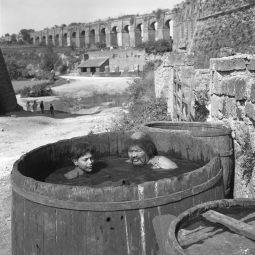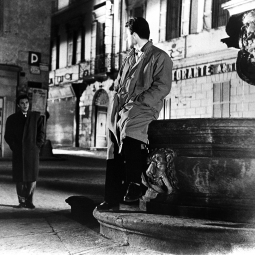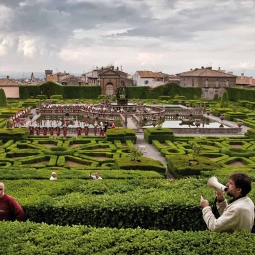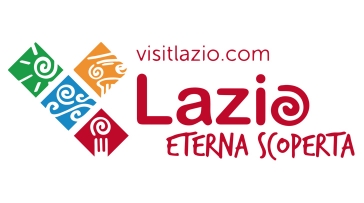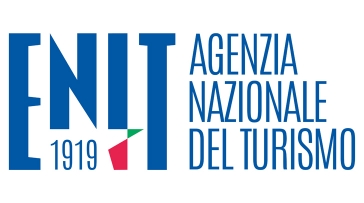Tuscia is an area in northern Lazio which has not been ruined by mass tourism yet, therefore it is a territory still very much like how it used to be - or how we believe it used to be – five or ten centuries ago. There are rivers and lakes, magnificent buildings and poor houses. Even the landscape is still intact: this is why we often went there to film historical movies and contemporary ones as well – especially movies about famers and peasants – as the countryside in Tuscia is just as beautiful as it was ten, thirty years ago.
We filmed Il medico e lo Stregone in San Martino al Cimino because I know the village very well. My parents used to take me here on holidays in the 1920s when I was a kid. In that film, the house where the character interpreted by Mastroianni lived in was in San Martino whereas the one of the character interpreted by De Sica was in another village, still close to Viterbo. Then there was the train station, which can be recognized in the sequence with Alberto Sordi: that, as far as I can remember, was in San Martino too.
The vast majority of the sequences of L’Armata Brancaleone – about 60% of them – was filmed in the area around Viterbo: we set a battle in an abandoned convent in Canino, we filmed in Vulci and in Palazzo Altieri in Oriolo Romano. In Oriolo’s main square I also filmed, in the following years, a scene of Speriamo che sia femmina.
In Viterbo, I filmed a few sequences of Viaggio con Anita and one of them was exactly in the same place where I previously shot that scene of L’Armata Brancaleone in which Vittorio Gassman and Catherine Spaak climb down a rope.
The sequence of the demolition of the church in Amici Miei was filmed in Calcata in just one day: the scenographer, the actors and I left from Florence early in the morning and came back late at night the same day. I remember that the parish priest of Calcata took part in this scene.










